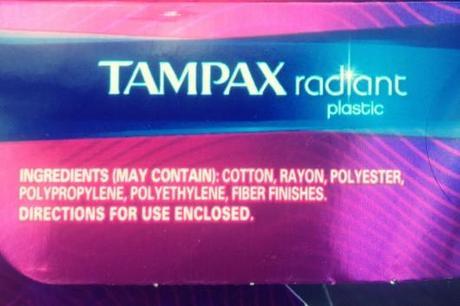Abby here.
Five years ago when I first embraced a “natural lifestyle”, my primary focus was on food. It seemed like the most logical start.
This went on for about a year or so until I had my first baby and had to go buy some baby soap. I had been gifted some Johnson and Johnson wash, but after glancing at the ingredients I just didn’t feel great about rubbing that all over my newborns brand spankin new skin. After all, your skin is your largest organ and essentially “drinks” what you put on it.
So off to Target I went searching and searching for a better alternative. I can’t remember which brand I ended up going with (now we use California Baby), but it was the start of overhauling any and every cosmetic product we had… soaps, shampoos, toothpaste, lotions, etc.
Without thinking I changed my lady hygiene products to Seventh Generation and Natracare and then never gave it another thought. Many folks are still uncomfortable with organic tampons, as any tampon can encourage bacterial growth and affect pH levels in that area. And although since having babies I’m more comfortable in a diaper pad, but I still on occasion use these tampons.

So fast forward to a few weeks ago, when I grabbed a box of Tampax tampons in a pinch.
I used a few and then left the box in the bathroom. I probably would have just finished out the box the next time around had I not noticed this label last week.

It sort of freaked me out, and I knew those ingredients couldn’t be good.
Let’s break it down:
COTTON: Sounds pretty harmless until you consider that non-organic cotton are routinely sprayed with pesticides and herbicides known as common carcingens.
RAYON: While this material originates from wood pulp, the chemical process of extracting it creates DIOXIN which is a known to disrupt estrogen production.
POLYESTER: A plastic cloth derived from petroleum, water, coal and air mixed with acid and alcohol.
POLYPROPYLENE AND POLYETHYLENE: Both are synthetic resins found primarily in the plastic packaging, but off gas and can be irritants to the skin.
Let’s do the math. Say you are a woman who will have your period for about 35 years (ages 13-48, give or take). Thats approximetely 420 months of periods. Now 420 periods lasting about 5 days each…. we’re at 2,100 days of wearing tampons. 5 tampons a day… we are well over 10,000 tampons throughout a lifetime.
And if I haven’t lost you yet (what can I say, I’m a math nerd) … you’re likely to wear each of those tampons for at least 4 hours, spending 40,000 hours or rather 1,666 days in a tampon … This is no small number! 1,666 days of offensive ingredients inside your body! No thanks, Tampax.
And I won’t make claims that I can’t supports, but there are numerous studies (like THIS) supporting the fact that these additional ingredients are contributors to TSS.
So what are safer alternatives?
Menstrual cups and reusable cotton pads are popular among women, but I just haven’t gone there yet. For now, I prefer to just dispose of my stuff. Because they are always available, I stick to Natracare and Seventh Generation pads and tampons. You’re best bet it to find a product that used 100% organic cotton only.
What about you? What do you use to keep up with our loving friend FLOW?
